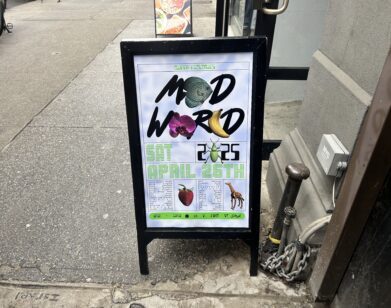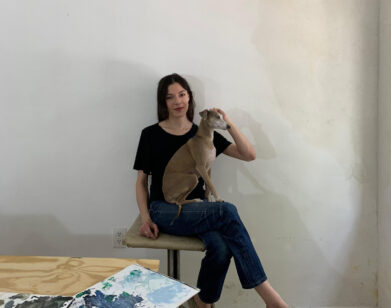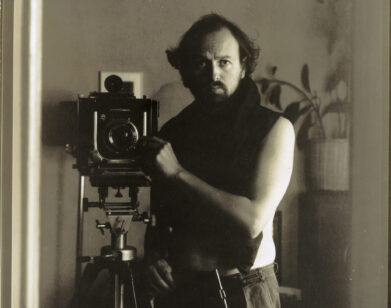Closer: Cecile Evans

STILL FROM ARTIFICIAL INTIMACY, 2009
“Intimacy issues,” are a typical cause (or excuse) for strife in people’s most personal relationships. But isn’t the inability to share a definition of what intimacy really is our shared issue? Video artist Cecile B. Evans investigates notions of intimacy, putting people in unusual situations that function as a blend of sociological experiments and poetic ruminations on relationships. Visually and conceptually, her work recalls Godard and the French thinkers of his era. Yet her work is also contemporary through its focus on the uncharted bonds and fissures created by new technology and shifting definitions of public versus private disclosure.
The Belgian-American artist was raised in Florida and now divides her time between Paris and Berlin. She studied acting at NYU before turning her attention to art. This Thursday, Evans will present her video “Artificial Intimacy” in the group show “Le Souci De Soi” at the Don’t Projects gallery in Paris alongside work by Spencer Sweeney and Alexander Huxeby. “Artificial Intimacy” is about a young man Evans met in Paris when he was 21 and the 19-year-old girl she introduced to him. After their first meeting, the couple had a dreamy night together but abruptly drifted apart. For her video, Evans’s reconnected them and insisted that they confront the intimate
physical knowledge they had shared and the potential for long-term closeness they rejected in the aftermath of their micro-romance.
Speaking of intimacy, Evans is also my best female friend in Berlin. We conducted this interview at home while Charlie, the cat that we co-adopted from video artist Jordan Wolfson, watched with avid—or feigned—feline interest.
ANA FINEL HONIGMAN: Why are you investigating intimacy?
CECILE EVANS: It’s the one constant in our lives that we can’t seem to measure. Everything else-money, shelter, food- we have a system for it. Intimacy is lawlessness. You can feel a level of intimacy with someone with one set of conditions and have the same set of conditions applied to another person and the result is completely different. We’re always chasing it.
HONIGMAN: How does this chase apply to your work?
EVANS: I’m looking for certain pointed moments of intimacy, simulating it so that we can approach it visually or physically.
HONIGMAN: Or, apparently though music, which seems to be many peoples’ emotional outlet when dealing with intimacy issues. How does this notion relate to the soundtrack to “Artificial Intimacy” where we hear five separate versions of the same iconic song?
EVANS: My choice of song came from the idea of a Greek chorus, wailing the same words and notes. You hear “Wishin’ and Hopin'” covered by Dusty Springfield, Nancy Sinatra, Dionne Warwick, Petula Clark, and Brenda Lee. The song was written by Burt Bacharach, and there’s something hilariously tragic-confusing even-about them all moaning about the same story, the same guy.
HONIGMAN: Does this interest in intimacy come from your personal emotional life?
EVANS: I’m interested in intimacy because it has been the most important thing in my life. Before I even knew what romance was even, I can remember wanting to be close to someone-to reach, touch, be touched.
HONIGMAN: Are you just referring to sexual intimacy? What about the intimacy between friends, family… pen pals?
EVANS: Intimacy is about a connection that makes you feel understood, that helps you to establish faith in truths that wouldn’t exist without another person. My work is about intimacy because I would go mad without it.
HONIGMAN: Do you feel that the forms of intimacy that you examine are universal or particular to our era?
EVANS: I’ve only ever lived in this era. I do think that there are forms of intimacy unique to these times. The Internet is an obvious one. Google search “accelerated intimacy” and the first 10 pages are about online encounters. I am working on a project that was inspired by a couple living on opposite ends of the world. He’s 19 and she’s 31. They established a relationship for over six months without having heard the other’s voice or seen the other’s face in live time. Yet they managed to develop something with all the trust, comfort, and frustration you would expect of a relationship. People have been doing this for centuries, just never this fast.
HONIGMAN: Does talking about intimacy generate intimacy?
EVANS: The most frequent and intimate conversations I have are about relationships. We never seem to get bored with this.






